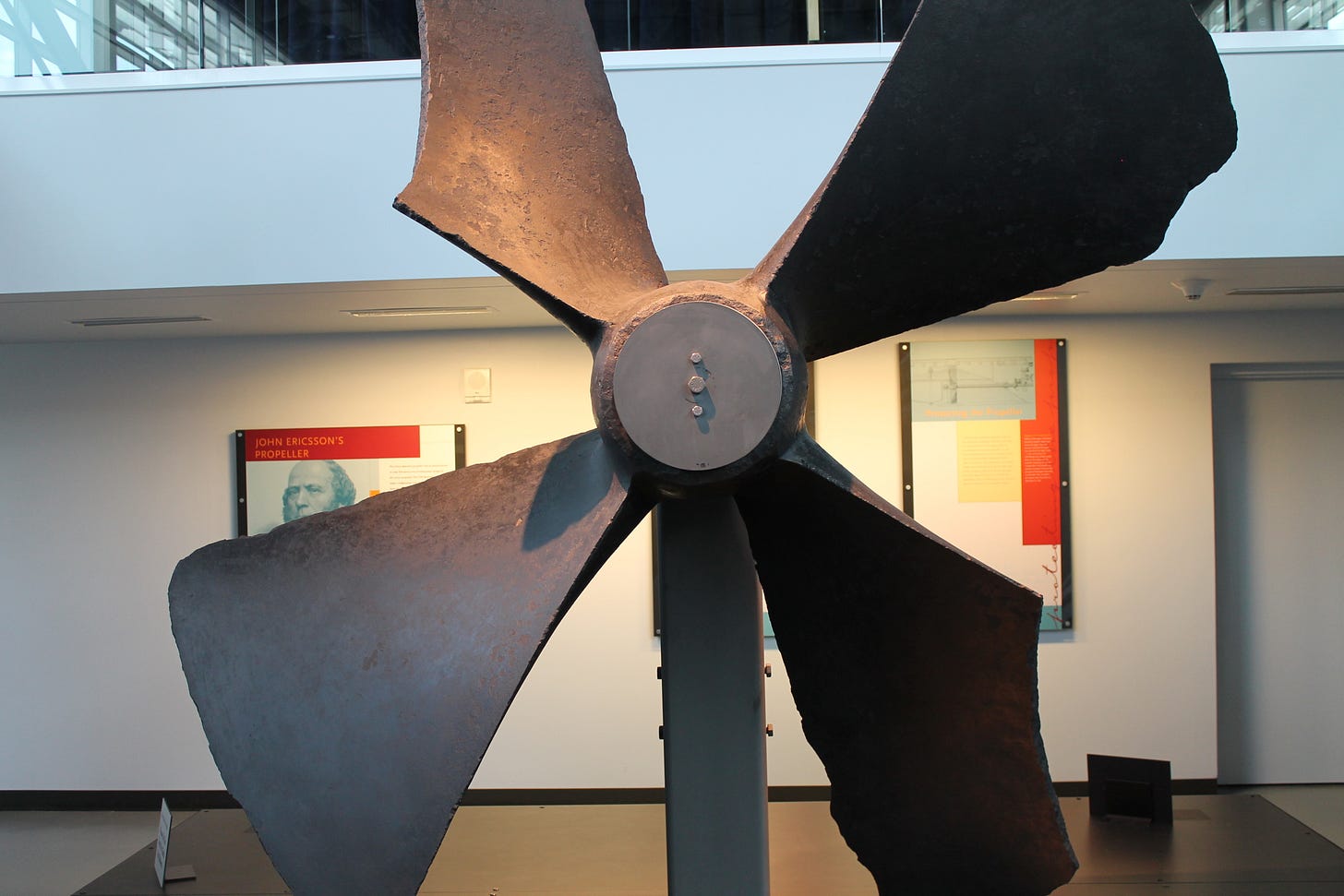Before jumping into this subject, I thought it wise to explain my bona fides in order to give some credibility to what I’m writing. Actually… I just wanted to used the words “bona fides” and thought that this would be a good place to do so.
I’ve worked as a marine engineer for almost 20 years but have been studying and reading about marine propulsion for a lot longer than that. I joined the US Navy in 2002 and served 6 years as an engineer, two years on a gas turbine powered ship and four years on a diesel powered ship. Ever since, I have worked as an engineer on offshore supply vessels in the oil fields of the Gulf of Mexico. I’ve had an interest in the history and operation of marine propulsion for as long as I can remember, so going in to that field was a natural career path for me to travel. With that being said, I would not consider myself to be an expert on any level but merely a very experienced, and overly curious, novice.
The field of marine engineering is incredibly complex and a person could spend their entire working life studying and learning one vessel and still not master that particular vessel. To say that modern ships are complicated is an severe understatement. Even older ships have a complexity about them that is hard to truly realize until a person tries to understand them in any depth.
My intention for this writing is to introduce the reader to a world that not many people know of and to give brief explanations to the systems that propel ships through the water. I will drop in some history here and there as I believe that it matters to the story and I will keep the information as basic as possible. The way that I intend to do proceed through all of this is through several posts where I describe each mode of propulsion in some detail. If there are any questions, then please feel free to write them in the comment section below or on whatever social media platform this gets shared too. I like questions as they help me to learn just as much as the reader and after all, the best way to learn is to teach and I’m all about learning more than just about anything else.
So its time to weigh anchor, answer bells, and get underway…
Generally speaking, there are three main forms of propulsion used during the last 200 years or so: steam engines, diesel engines, and gas turbines, and each one of these forms can be broken down a little further into some other categories, which I will cover as a I get to them, but all and all, there are only three main modes that are used to generate the power to turn the propeller shaft.
Steam is the oldest form of propulsion and is just about extinct as a mode of propulsion with the exception of some museum ships, LNG tankers, and naval ships. Steam came into being around the end of the 1700’s and started really becoming a thing in the mid 1800’s, mostly through naval development, but as the steam plants became more efficient and powerful they became more widely used and the age of sail started to come to an end.
By the 1900’s, sail was all but gone and steam was the dominate power source but a new technology was coming available that would eventually end steam’s dominance; the diesel engine. Rudolph Diesel is widely credited with developing the diesel engine, but it was a technology that was developing in England as well. Rudolph Diesel designed the first operable compression ignition engine in 1897 and a German machine building company, Maschinenfabrik Augsburg-Nurnberg, built the engine through Diesel’s guidance. Today, that machine builder is known as MAN Diesel and is still building engines to this day.
The diesel engine was being put into ships as soon as an engine could be built that would propel the ship and the technology progressed rapidly and now diesel engines power the overwhelming majority of ships today, both naval and commercial.
The gas turbine started coming on the scene in the 1960s. These engines are aeroderivative engines, meaning that they were developed from jet engines used on aircraft. They are fairly simple machines, so far as machines go while being highly complex at the same time. There are a lot of benefits to these engines but they have seen very limited use in the commercial market. Gas turbines see more use in naval service than anything due to some of the unique characteristics of these engine, however there are some applications in the commercial world where gas turbines are starting to come around a little more and may do so more in the future.
Making power is an important thing but being able to use that power to actually move the vessel is more importanter. The very first methods of utilizing the power generated was through the paddle wheel, which then gave way in the mid 1800’s to the screw propeller. Even as simple as a paddle wheel looks, they went through their own technological progression to the point where they became fairly complex and were somewhat efficient in use. Though as manufacturing technology developed and the ability to build screw propellers became available, the screw propeller won out over the paddle wheel and today propellers are the norm.
Ok… this seems like a good place to stop writing, or typing as it were, so this concludes the introduction and brief history of marine propulsion. Next, Imma jump into steam and how it works. Lemme know what you think.
Thanks for following along.
Nate





Why the turbine engine instead of a regular combustion gas engine?